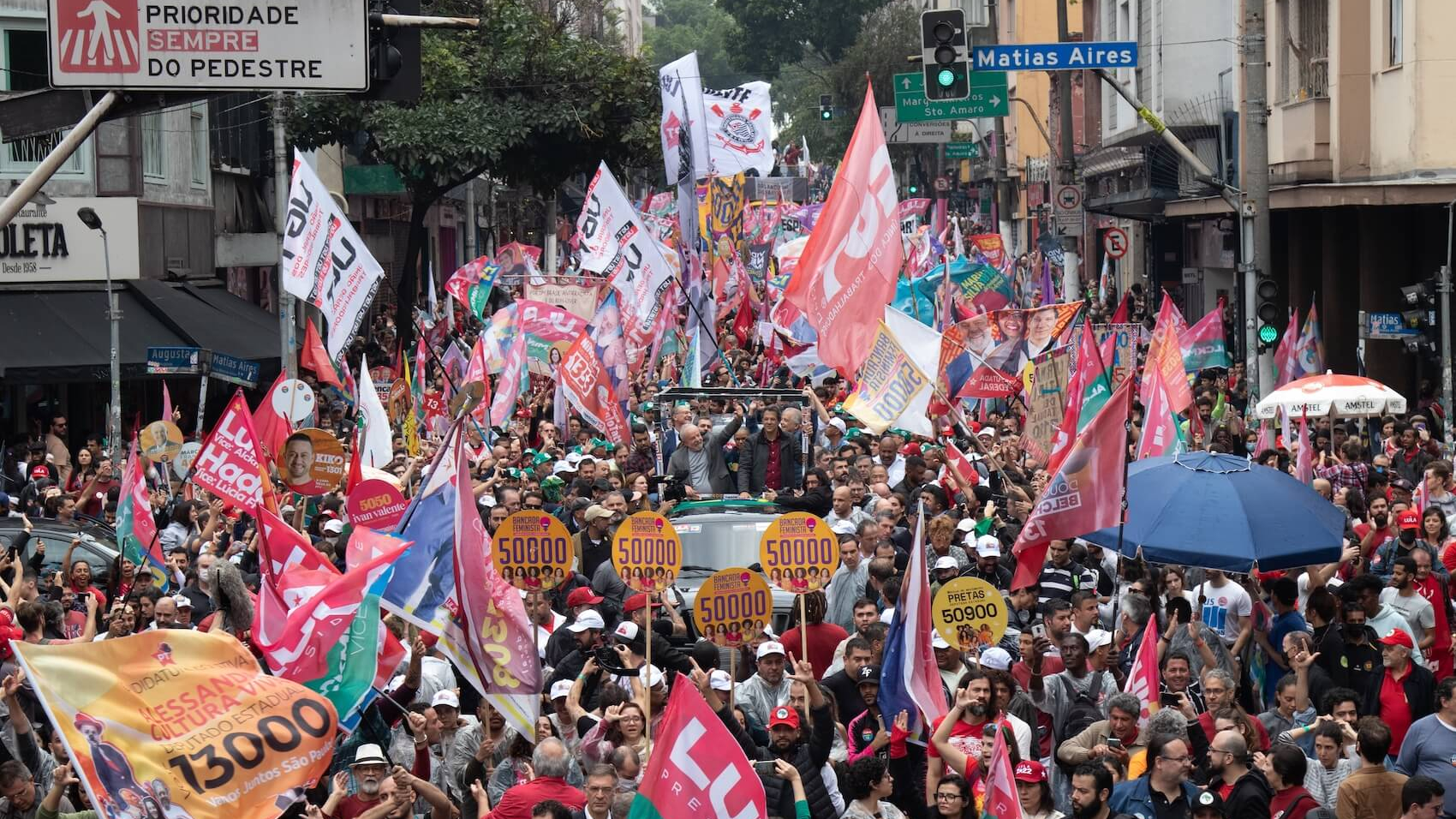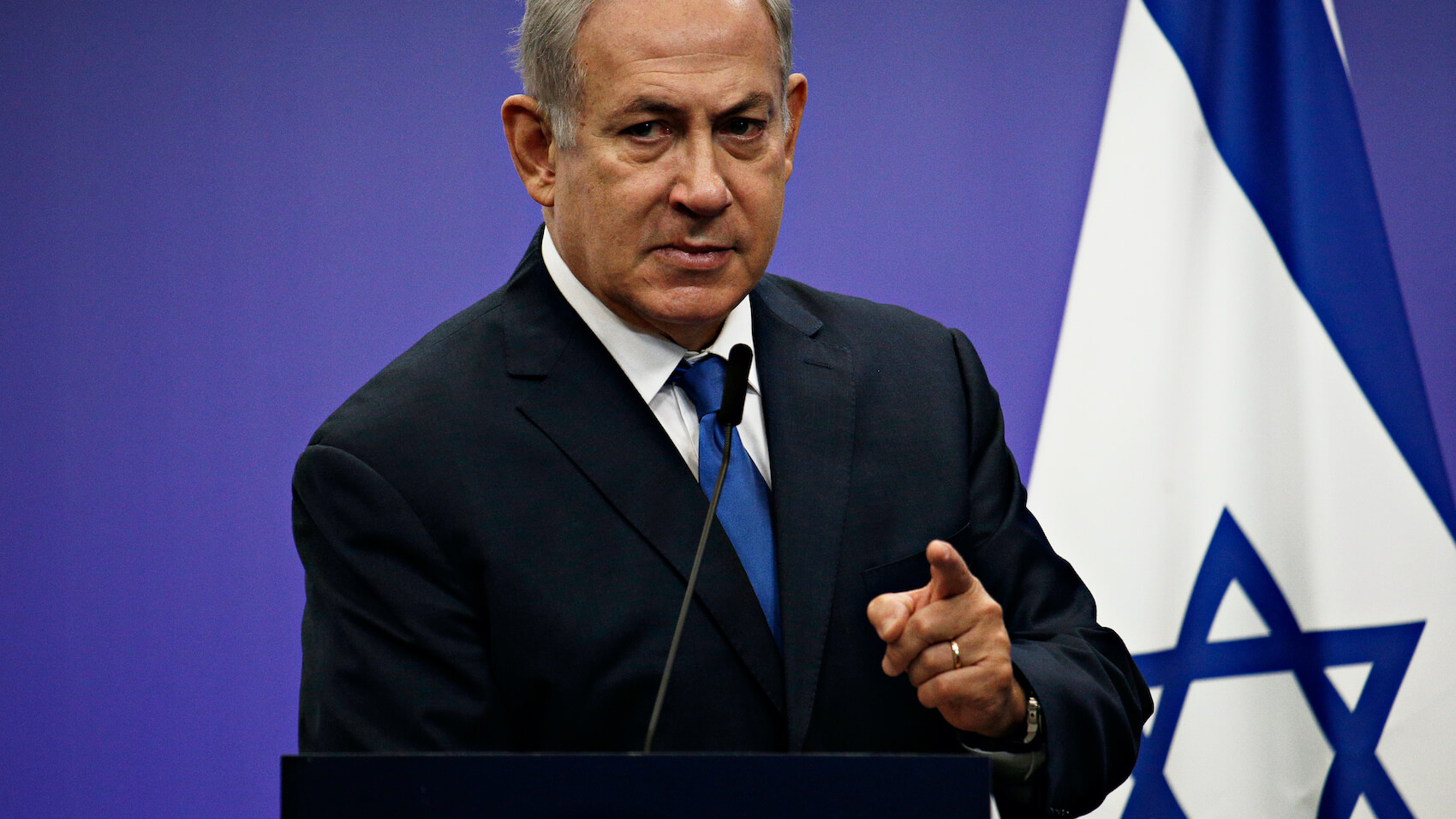To win another term as President in Turkey, incumbent Islamist populist Recep Tayyip Erdogan has been forced into externalizing and magnifying his populism, portraying not domestic enemies as ‘elites’ that defy the will of the people, but rather shadowy, non-identifiable international forces as the true elite that the Turkish people must struggle against. Thus, with his new nuclear reactor, “people’s car” and drone carrier ship, Erdogan portrays himself as the tough, macho leader the Turkish people require to stand against the international elite oppressing them at every turn.
By Ihsan Yilmaz, Nicholas Morieson & Ana-Maria Bliuc*
Turkey holds its next presidential elections on May 14, 2023, and for the first time in two decades Recep Tayyip Erdogan’s long reign as Turkish President appears to be faltering, as opposition leader Kemal Kilicdaroglu mounts a serious challenge to his rule. Turkey’s poor economic performance, largely the result of Erdogan’s unorthodox economic policies, has contributed to the decline in support for the Turkish leader. Equally, Erdogan’s apparent ill health, which has led him to appear via video link at events he would ordinarily attend in person, has led to growing concerns that he is ailing and no longer capable of running the country. To counter these issues, he and his supporters have sought to build the image of the President as a macho and virile populist who is the only one capable of protecting the Turkish people from their foreign ‘imperialist’ adversaries and leading the country toward a bright future. In contrast, Erdogan’s rival Kilicdaroglu, is portrayed as a physically weak and elderly man, often in domestic environments which can be associated with housework. This image is meant to communicate that Kilicdaroglu is not a worthy candidate as he cannot stand up to the shadowy international ‘elites’ who seek to undermine Turkey’s economy and diminish its power in the world. Part of this campaign involves the creation of memes, a trend encouraged by Erdogan’s online communications staff, who post images of the President on his official Twitter account appearing ‘tough’ and ‘in control’ and dressed in military clothing.
When the Erdogan’s Justice and Development Party (AKP) first won power in 2002, he promised his party would govern as ‘Muslim democrats,’ return power to the Turkish people, negotiate an end to the brutal conflict with Kurdish militant groups, and to seek membership of the European Union. More than twenty years later, the AKP has established itself as the authoritarian dominant political force in the nation, marginalizing its rivals and removing them from the military, bureaucracy, and media.
Yet, despite Erdogan’s overwhelming power, polling consistently shows him trailing – albeit only by a small margin – CHP leader Kilicdaroglu in the battle to become Turkish president. Erdogan’s declining popularity among Turkish voters is chiefly the result of the failure of his economic policy, which saw him demand the Turkish Central Bank lower interest rates, a decision which, unsurprisingly, precipitated a period of high inflation. Inflation pressures have damaged Turkey’s economy by vastly depreciating the value of the Turkish lira, weakening Turkish purchasing power, and forcing Turkish businesses to spend more repaying foreign loans. The political result of Turkey’s growing economic problems is a tremendous loss of support for the AKP and Erdogan in Turkey’s major cities. For example, in June 2019 Erdogan’s candidate in the Istanbul mayoral election was soundly defeated by the opposition CHP candidate. No non-AKP candidate had won a mayoral election in Istanbul for a quarter of a century, this result has demonstrated the growing discontent with Erdogan’s Presidency and in particular with his handling of Turkey’s economy.
Erdogan and his supporters, however, have not given up on winning another term as President. In the year leading up to the 2023 Presidential election Erdogan unveiled a number of projects intended to diminish the growing public impression of him as a man losing control of the country’s economy. Rather, Erdogan, ever the canny populist, sought to remake his image into that of a powerful, tech savvy, modern leader in total control of his nation’s destiny, yet as someone who always has the interests of his poorest citizens in his mind.
For example, in 2022 Erdogan unveiled the first electric car produced in Turkey, the TOGG, which he promoted as the “people’s car.” TOGG is heavily promoted by Erdogan, who has used taxpayers’ money to fund its production and in turn used it as a symbol of the modern, technologically powerful Turkey he claims to be building. However, the car is likely to be prohibitively expensive, and it is difficult to imagine how the average Turkish citizen could afford to drive this “people’s car.” This has led some commentators to credibly accuse Erdogan of using the car to win another term in office, and to suggest that the project – so intertwined with Erdogan – will inevitably fail if Erdogan is not re-elected.
In an even more obvious attempt to portray himself as leader of a great military power and defender of Turkey, Erdogan in April 2023 unveiled what may be the world’s first armed drone carrier ship, the multi-purpose amphibious assault ship TCG Anadolu. The ship, now moored in front of the Topkapi Palace in Istanbul, was described by Erdogan as a demonstration of his government’s defiance of “imperialists” and “interest lobbies”, insofar as it was built locally and from mostly Turkish materials. Erdogan also claimed that the opposition CHP “couldn’t have” built the ship, implying they were beholden to foreign imperialists and other anti-Turkish interest groups. In contrast, Erdogan claimed he was interested only in defending the interests of the Turkish people.
Also in April 2023, Erdogan unveiled Turkey’s first nuclear power plant, built with Russian assistance. While Turkey’s relationship with several other NATO countries has been strained by Erdogan’s decision to maintain close relations with Russia, Erdogan appears to see cooperation with Putin as vital to his nation’s – and his government’s– interests. The nuclear power plant, the culmination of an agreement signed with Russia in 2010, provided Erdogan with another opportunity to portray himself as a strong leader providing for his people, and defending their interests. In this case, the nuclear power plant was described to the public as a way of giving the Turkish people greater autonomy through energy self-sufficiency. Moreover, Erdogan described that power plant as helping create a “Century of Türkiye” for the nation’s youth, who he claimed would benefit most from the construction of the reactor and two others planned. Intriguingly, Erdogan did not personally attend the unveiling of the reactor. Rather, the President was too ill to attend in person, and instead he and Putin appeared via video conference at the opening ceremony, perhaps undermining Erdogan’s attempt at using the power plant to burnish his credentials as a strong leader protecting Turkish interests from foreign adversaries.
Erdogan’s supporters have naturally sought to help their leader win another term in office. Cognizant that their leader is in danger of losing office, AKP supporters and operatives have been hard at work creating memes intended to portray Erdogan as a tough and powerful leader who hears the voice of the people and acts always in their best interests. When on May 2, 2023 Erdogan’s Twitter feed posted an image of him dressed in air force clothing and wearing aviator sunglasses, as if he were about to fly a fighter plane, his dutiful supporters began constructing memes based on the image. For example, one prominent Erdogan supporter on Twitter with more than 150,000 followers, tweeted out the image with the caption “Tayyip Erdogan is today’s Abdulhamit,” referring to the last Islamist Ottoman sultan (r. 1876-1909) who held real power over the failing Empire. These media strategies are used to show Erdogan as a leader who is representative of all Turkish people but at the same time, he is powerful enough to bring Turkey to its former glory on the global scene. In contrast, another tweet by the same user showed the same image of Erdogan juxtaposed against a photo of Kilicdaroglu sitting in what is presumably his own kitchen, holding up an onion to the camera. The caption reads “kidding aside, who would you vote for?”
Another popular meme contrasted the image of a virile and powerful Erdogan against a ‘weak’ looking Kilicdaroglu sitting at a table in a white singlet, eating a meal on his own. Discussing the image first tweeted by Erdogan’s Twitter feed, journalist Sevilay Yilman remarks upon the curious decision to portray Erdogan as a powerful military leader, when Erdogan himself sought to end the military tutelage that plagued Turkey throughout much of the 20th century. The photo, she argues, reminds voters that Erdogan may have ended secular-nationalist military tutelage, but that he subsequently inaugurated an even more insidious and all-encompassing form of military tutelage. Indeed, the photo seems to be telling voters that Erdogan has now supplanted the military leaders of the past, and that Turkey remains a deeply militarized nation rather than one ruled by civilian leaders.
Why, then, would Erdogan promote himself using images of this kind? The answer lies in his ever-present desire to promote himself as a populist savior of ‘the people.’ To win power, Erdogan – in an era in which the Turkish economy is crumbling, relies more and more on personalistic rule, and by portraying himself as the chief defender of the Turkish people from their ‘imperialist’ (i.e., American, European, Zionist, international banker) enemies, and from domestic collaborators with imperialists (i.e., the CHP and their allies Kurds and Gulenists).
If in the past Erdogan has sought to make Turkish people feel nostalgic for the glory of the Ottoman Empire, he now attempts to portray himself as leading the Turkish people toward a bright future in which they build and drive their own cars, become energy self-sufficient, and command the waves with their own home built armed drone carrier ships. In doing so, they can effectively thwart the destructive desires of unnamed ‘imperialists’ who hate Turkey and its people.
It is interesting to consider how, for decades, the literature on populism has predicted that populists, once they formed governments, would fail to win office on successive occasions because, first, populists could never deliver on their promise to ‘save’ the nation and give all power to ‘the people’ and, second, because once in government they would automatically lose their ability to portray themselves as fighting governing ‘elites.’ The AKP has proven the populism theorists wrong by ruling for twenty years as populists. They have done this largely through the construction of a personality cult around Erdogan himself, and his portrayal as a mighty protector of Turkey, who loves his nation and defends it from its ‘elite’ enemies. However, having vanquished domestic elites long ago, Erdogan and the AKP now portray shadowy foreign forces as an international ‘elite’ that despises Turkey and its people, and Erdogan as the only man capable of defending Turkey from imperialists. The CHP, once the ruling party of Turkey, is reduced in these circumstances to a local collaborator with these foreign ‘dark forces’ attempting to destabilize Turkey and prevent the flourishing of its people.
Erdogan’s self-portrayal as a macho military leader thus at once seeks to strike fear into Turkish citizens, by reminding them that they are in some way at ‘war’ with foreign imperialists, foreign NGOs, the ‘interest rate lobby,’ and internal collaborators with these groups, but also attempts to reassume voters that Erdogan is ready to meet these enemies in combat. In a similar way, as the economy falls apart around him, Erdogan seeks to reassure voters that he is fully in charge, and the nation’s economic woes are the product of foreign forces attempting to undermine Turkey. It is striking, then, that in order to win another term as President, Erdogan has been forced into externalizing and magnifying his populism, portraying not domestic enemies as ‘elites’ that defy the will of the people, but rather shadowy, non-identifiable international forces as the true elite that the Turkish people must struggle against. Thus, with his new nuclear reactor, “people’s car” and drone carrier ship, Erdogan portrays himself as the tough, macho leader the Turkish people require to stand against the international elite oppressing them at every turn.
The image of Erdogan dressed as a fighter pilot and the Turkish navy’s new flagship and technological tour de force, the TCG Anadolu, perhaps best represent Erdogan’s 2023 presidential campaign strategy of portraying the President as a mighty Sultan protecting his people from foreign threats. Evoking in his supporters’ nostalgia for the Ottoman Empire, but also feelings of hope for a similarly glorious future in which the Turkish people – and not foreign imperialists – are the authors of their own destiny, Erdogan uses his new ship as a symbol of his defiance of foreign ‘elites’ and ability to defend his own people. It is a strategy that may well be working. For example, one Erdogan supporter, Necati Tan, is quoting as saying “This warship is our national pride” and that with its unveiling “The president has brought back the glory of the Ottoman Empire.”
Will the carefully crafted image of himself as a tough, militaristic leader who, through technological innovation and a drive toward economic and energy self-sufficiency, is saving the Turkish people from the largely imagined foreign forces attempting to undermine Turkish power be convincing enough for the Turkish people to give him another mandate? How commonplace these sentiments are remains unknown, but the result of the May 14 elections will tell us much about Erdogan’s success of this strategy and his ability to distract voters from the collapsing economy.
Funding: This work was supported by the Australian Research Council [ARC] under Discovery Grant [DP220100829], Religious Populism, Emotions and Political Mobilisation.
(*) Ana-Maria Bliuc is a social and political psychologist who joined Psychology at the University of Dundee in 2019. She has a PhD in Psychology from the Australian National University, and prior to her current appointment she held academic positions in Australia at Western Sydney University (2016-2019), Monash University (2012-2016), and the University of Sydney (2006-2012). Her research examines how people’s social identities influence their behavior in a range of contexts including health, environmental (climate change), and socio-political (collective action and social change). More recently, she has focused on research on online communities looking at how collective identities and behaviors are shaped through online interactions. This research has been conducted in online political communities (mostly far right and white supremacist) and online health communities (recovery from addiction). Dr Bliuc’s received funding from the Australian Research Council, and she has published in a wide range of high-quality international journals such as Nature Climate Change, WIREs Climate Change, Computers in Human Behaviors, and Journal of Cross-Cultural Psychology.














